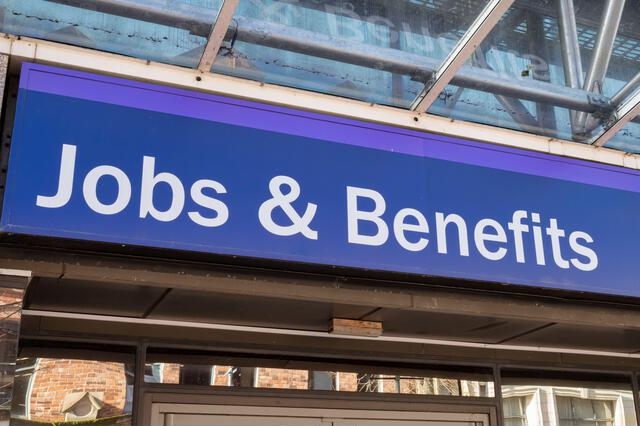Economists at the University of Ulster analyse and suggest that the real unemployment rate of NI may be three times higher than the official measure. Northern Ireland’s rate currently stands at just 2.6%, nearing a record low. According to a University of Ulster study, the unemployment rate is approximately 8%. The research was conducted by economists Mark Magill, Marguerite Shannon, and Sarah Perry. This article addresses the question of Northern Ireland’s actual unemployment rate.
International standard for unemployment rate measurement
An internationally agreed standard measures the official unemployment rate, which counts economically inactive people who desire work. The number of people in government education schemes also achieves it. Therefore, the real unemployment rate of NI can be higher than the official rate. If a person is not working or looking for work, he is classified as economically inactive. This includes retired people, those in full-time education, ill or disabled, and those with caring responsibilities.
Real unemployment rate of NI
The real unemployment rate of NI is much higher than the official statistics. Many in Ireland suffer from hidden unemployment. Economists break down data on economic inactivity to reveal the number of people who desire work, a group often termed the “hidden unemployed.” There are currently approximately 48,000 people in this inactive but willing-to-work group. More than half of these people are economically inactive due to illness or disability.
8.2% Northern Ireland’s actual unemployment rate
The real unemployment rate of NI is three times that of the official statistics. When the 2,600 people in government training schemes are added to the inactive but willing-to-work-for group, the unemployment rate rises to 8.2 percent. However, there is a caveat about the difficulties the hidden unemployed encounter when returning to the labor market. For example, this research shows that mothers with low levels of education are far more likely to be inactive than those with higher degrees, so simply removing barriers to childcare will not be enough.
UK real unemployment rate of 9%
Economists at the University of Ulster applied the actual unemployment formula to the UK. According to this analysis, the unemployment rate in the UK has risen from 4% to over 9%. Northern Ireland currently has the lowest official unemployment rate. On the other hand, Northern Ireland has the fourth highest real unemployment rate after the South West, East, and South East of England. The North East of England has the highest real unemployment rate at over 10%.
Reducing the number of employee jobs in the last three months of 2023
The number of employee jobs in Northern Ireland fell slightly in the final quarter of 2023, the Quarterly Employment Survey (QES) shows. This followed ten consecutive quarterly increases since June 2021. The QES questions about 6,000 companies, covering all employers with 25 or more employees and all public sector employers. There were approximately 817,780 jobs in Northern Ireland in December 2023. This was a decrease of 5,050 jobs (-0.6%) over the quarter and an increase of 6,400 jobs (+0.8%) over the year.
Errors in the publication of regular monthly unemployment figures for NI
The usual monthly unemployment and employment figures have yet to be released because a problem was identified in how the Office for National Statistics (ONS) data was processed for Northern Ireland from November 2023 to January 2024. The problem is with the Labour Force Survey (LFS), which assesses unemployment and employment rates. Nisra Statistics Agency said the issue was different from the response rate to the survey and that its data collection for November 2023 to January 2024 needed to be more effective.
Low growth forecast for Northern Ireland’s economy in 2024
A new forecast from consultancy EY shows that Northern Ireland’s economy will grow by just 0.7% in 2024. The current meager unemployment rate would rise slightly. The forecast is similar to the Ulster University Economic Policy Centre published in January. This forecast shows that the economy will grow by 0.8 percent this year and 1.1 percent in 2025.
The complex and unfavorable situation of NI’s economy
The latest official data for Northern Ireland, covering the third quarter of 2023, shows that manufacturing and consumer services, such as retail, are struggling, but service exports are doing well. Meanwhile, the National Institute of Economic and Social Research also suggested the return of devolution and a £3.3 billion economic support package would help the economy. The think tank said it could help business ventures. Because public spending helps unlock private investment.
Mass redundancies in Northern Ireland jobs
Last month, four major employers in Northern Ireland announced layoffs. This could see the loss of over 1,000 jobs. Ulster Bank has announced that up to 250 jobs will be lost in Northern Ireland due to the bank’s closure in the Republic of Ireland. Meanwhile, earlier this month, builders Seagate and Norbrook announced they would cut 116 and 180 jobs, respectively.
The impact of the Covid-19 pandemic on the increase in unemployment in NI
At the pandemic’s start, there were real concerns about rising unemployment, as many businesses were forced to curtail operations. Unusual government intervention, like the furlough scheme, primarily avoided this, but jobs were still lost. The number of people on company payrolls in NI fell from 753,000 in March 2020 to 736,000 at the end of the year. The unemployment rate rose from a record low of 2.4 percent just before the pandemic to 4.3 percent in the summer of 2021.
Irish people seeking unemployment benefits
As pandemic restrictions eased, the labor market quickly recovered, and rising inflation did not significantly derail it. In April 2023, fewer than 786,000 people were on corporate payrolls, and the unemployment rate fell to 2.5 percent. By most other measures, the labor market has shown near-perfect recovery. For many employers, the biggest challenge has been finding the workforce they need to grow their business. However, the rush of adjustments has coincided with some tentative signs of weakening official data. The number of people claiming unemployment benefits has increased.
There is a strong likelihood of rising unemployment in Northern Ireland.
Research shows that the real unemployment rate of NI is much higher than the official statistics. After the end of the Covid-19 pandemic, many are seeking unemployment benefits. There are also massive redundancies in Northern Ireland jobs. A combination of factors can increase the unemployment crisis in the UK. Meanwhile, the Conservative government has no plans to improve the jobs situation in Northern Ireland.





























